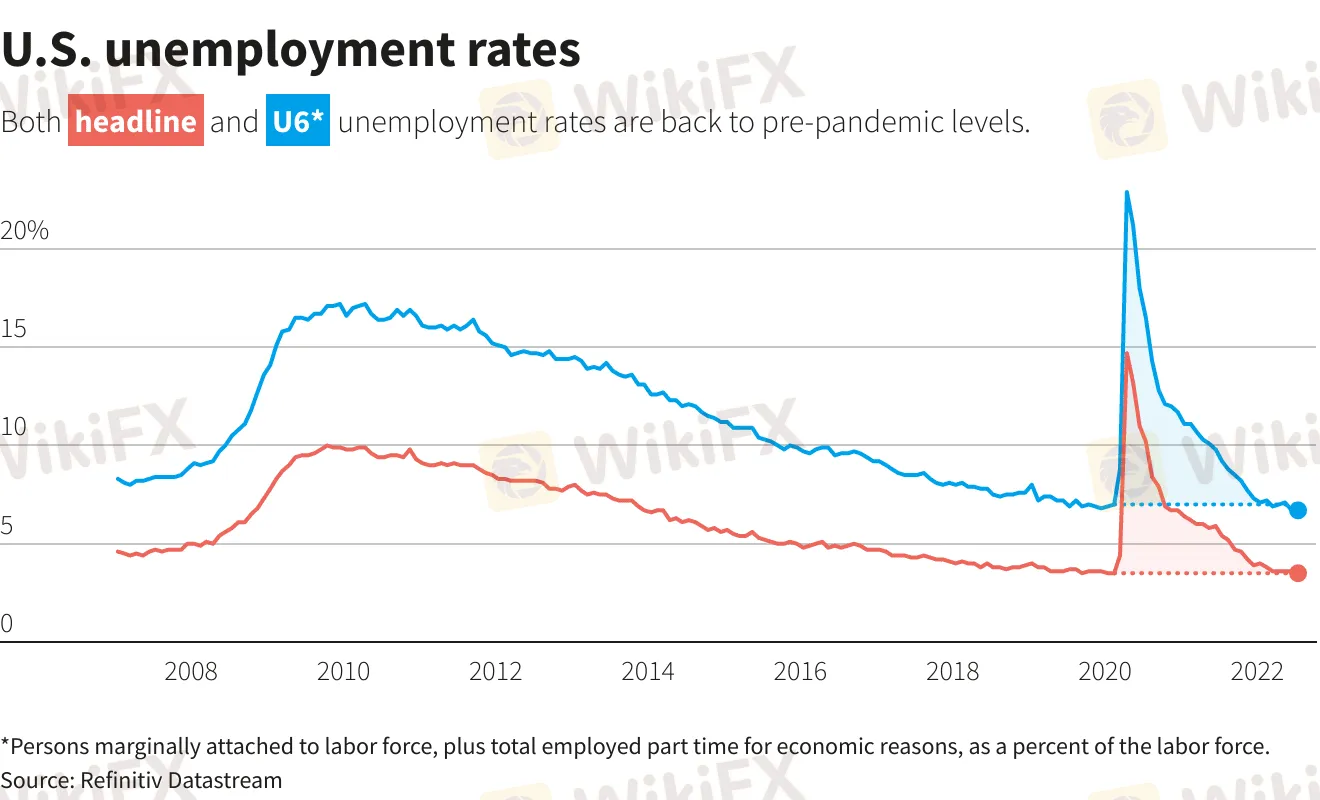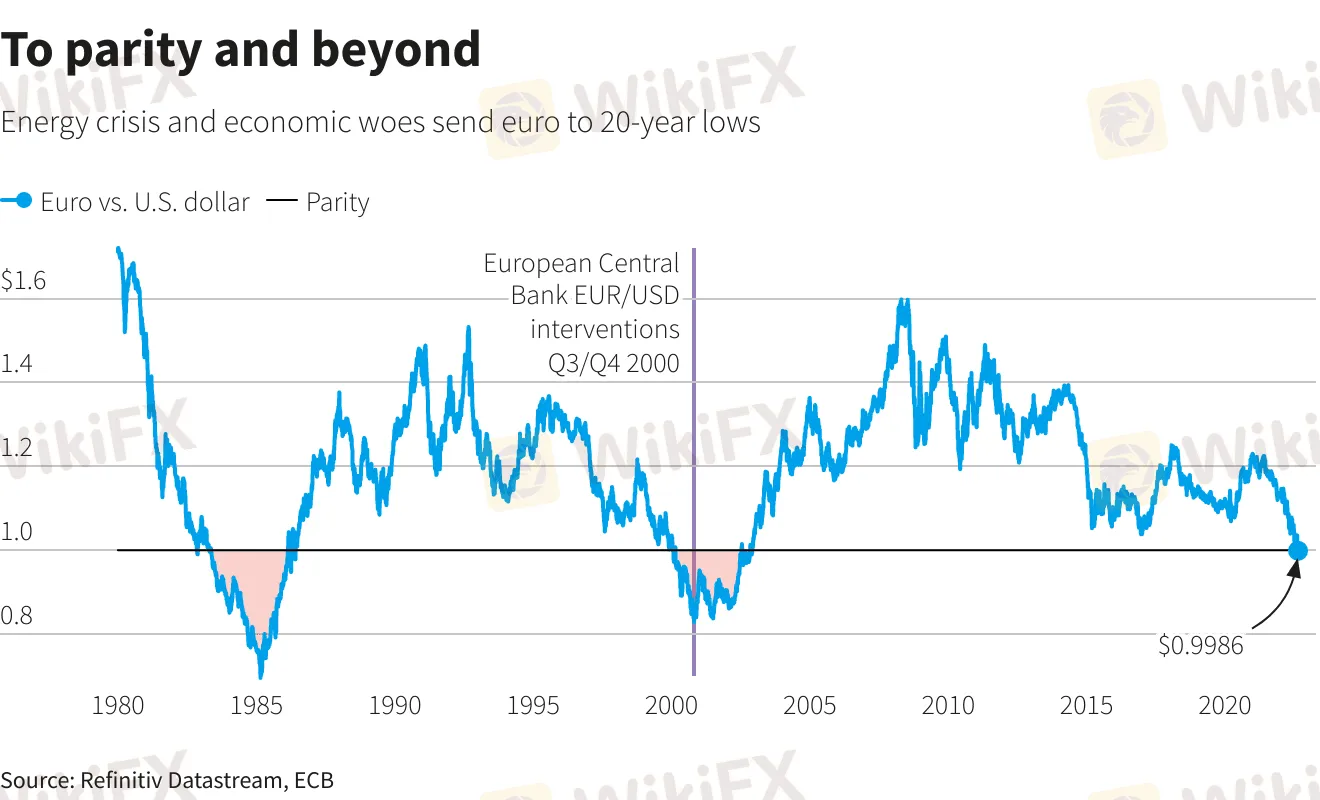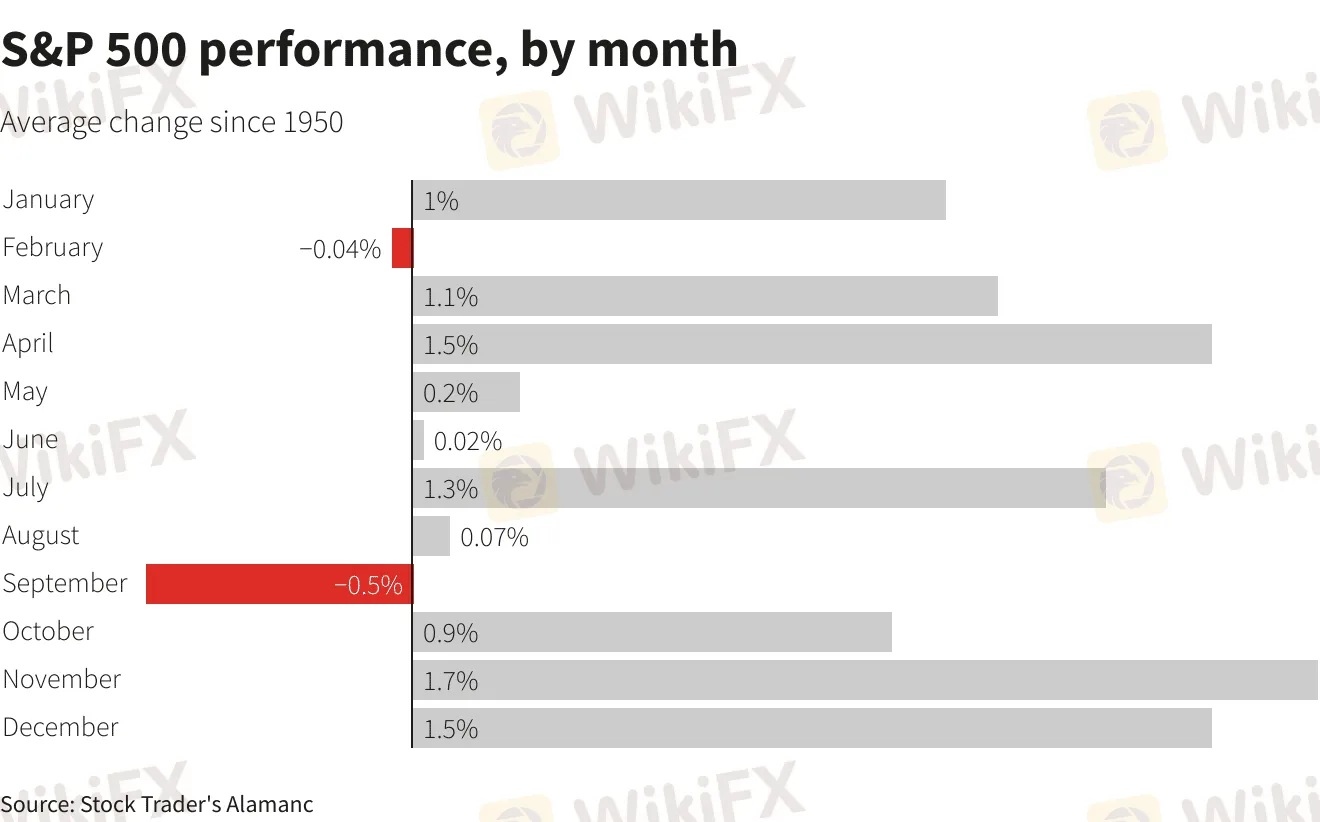简体中文
繁體中文
English
Pусский
日本語
ภาษาไทย
Tiếng Việt
Bahasa Indonesia
Español
हिन्दी
Filippiiniläinen
Français
Deutsch
Português
Türkçe
한국어
العربية
Take Five: Next up, it’s U.S. payrolls and euro zone inflation
Abstract:Global economic unease is growing and the closely watched monthly jobs report in the United States and inflation gauges in Europe will arrive in the coming week at a key juncture for markets and central banks.
Heres a look at the week ahead in markets from Dhara Ranasinghe, Tommy Wilkes and Vincent Flasseur in London, Lewis Krauskopf in New York, Kevin Buckland in Tokyo and Sumanta Sen in Mumbai.
1/ JOBS CHECK-IN
Monthly U.S. jobs data on Sept. 2 will test the argument that the worlds biggest economy is in solid health, and indicate whether the Federal Reserve can engineer a “soft landing” even as it hikes interest rates to fight inflation that has been running at four-decade highs.
Those arguing against the prospect of a recession, despite two straight quarters of shrinking U.S. gross domestic product, have been able to point to the strong labour market, at least so far.
In July, nonfarm payrolls increased by 528,000 jobs, the largest gain since February. Early estimates for August are projecting an increase of 290,000, according to Reuters data.

2/ INFLATION SHOCK
Inflation in the euro area remains uncomfortably high, the flash August consumer price index on Wednesday is likely to show. That will only pile pressure on the European Central Bank to hike rates again in September even as recession risks mount.
Instead of peaking soon, as hoped just a few weeks ago, inflation could soon hit double digits. It was at an annual rate of 8.9% in July – well above the ECBs 2% target.
The source of fresh inflation angst is clear: soaring gas prices, which lurched higher again as Russia signalled another squeeze on European gas supplies.
Gas prices are up 45% in August, and 300% this year. Where they go from here remains the key to when euro zone inflation will finally peak. As one economist put it, were all becoming gas watchers now.

3/ FACTORY FUNK
Chinas moribund economy may continue the lead from the U.S. and Europe in reporting manufacturing gloom in the coming week.
Official PMI data for this month is due on Wednesday, after a surprise contraction in July as COVID-19 flare-ups fuelled by the Omicron variant of the virus forced further clampdowns under Chinas draconian zero-COVID policies. The Caixin private survey follows the next day, and is also at risk of dipping into contraction territory.
Consumer and business confidence continue to be hit by the ongoing property crisis. And now a searing heat wave is also hampering production.
Chinas authorities are trying to salvage growth this year, with the central bank cutting additional lending rates on Monday after slashing others the week before. On Thursday, the government announced it would take steps to strengthen the labour market, providing the stock market with a bit of cheer.

4/BACK BELOW PARITY
Once again in recent days, one euro became worth less than a U.S. dollar. The currencys tumble to new 20-year lows near $0.99 is emblematic of the scale of the challenges facing the bloc, not least an energy crisis hitting the euro zone harder than elsewhere.
Another dramatic jump in natural gas prices ahead of peak winter demand in a region still dependent on Russian supplies is fanning inflation fears, as well as expectations the ECB will hike rates faster even as the economy slides towards recession.
Euro/dollar is increasingly correlated with gas prices, and investors and analysts predict further weakness as Russia continues curtailing its exports.
On a trade-weighted basis, the euro is falling fast too, and recently reached its lowest level since February 2020, when the start of the COVID-19 pandemic rattled world markets.

5/STOCKS CRUELEST MONTH
The U.S. stock markets rebound has lost some steam, just as it is entering what has been on average its most treacherous month.
Since 1950, the benchmark S&P 500 has fallen an average of 0.5% in September, the worst monthly performance for the index and one of only two months to register an average decline, according to the Stock Traders Almanac, which notes that fund managers tend to sell underperforming positions as the end of the third quarter nears.
This September, a number of factors could set investors on edge. Following the Jackson Hole central banking symposium in Wyoming, the Fed will hold its next policy meeting on Sept. 20-21. Ahead of that comes the latest reading on consumer prices that will indicate if inflation has peaked and is likely to cause volatility no matter where it lands.


Disclaimer:
The views in this article only represent the author's personal views, and do not constitute investment advice on this platform. This platform does not guarantee the accuracy, completeness and timeliness of the information in the article, and will not be liable for any loss caused by the use of or reliance on the information in the article.
Read more

Top 10 Trading Indicators Every Forex Trader Should Know
Master the top 10 Forex trading indicators to analyze real-time Forex quotes, trends, and market signals. Learn strategies to boost accuracy and avoid mistakes.

Geopolitical Events: What They Are & Their Impact?
You've heard many times that geopolitical events have a significant impact on the Forex market. But do you know what geopolitical events are and how they affect the FX market? Let us learn about it today.

Why Do You Feel Scared During Trade Execution?
Trade execution is a pivotal moment for traders. It is when analysis turns into action, and potential profits or losses become reality. However, for many traders, this moment is accompanied by fear. Why does this happen, and how can you address it?

WikiEXPO Global Expert Interview: Simone Martin—— Exploring Financial Regulation Change
In the midst of financial innovation and regulation, WikiGlobal, the organizer of WikiEXPO, stays abreast of industry trends and conducts a series of insightful and distinctive interviews on pivotal topics. We are delighted to have the privilege of inviting Simone Martin for an in-depth conversation this time.
WikiFX Broker
Latest News
Geopolitical Events: What They Are & Their Impact?
Top 10 Trading Indicators Every Forex Trader Should Know
Why Do You Feel Scared During Trade Execution?
Currency Calculator


